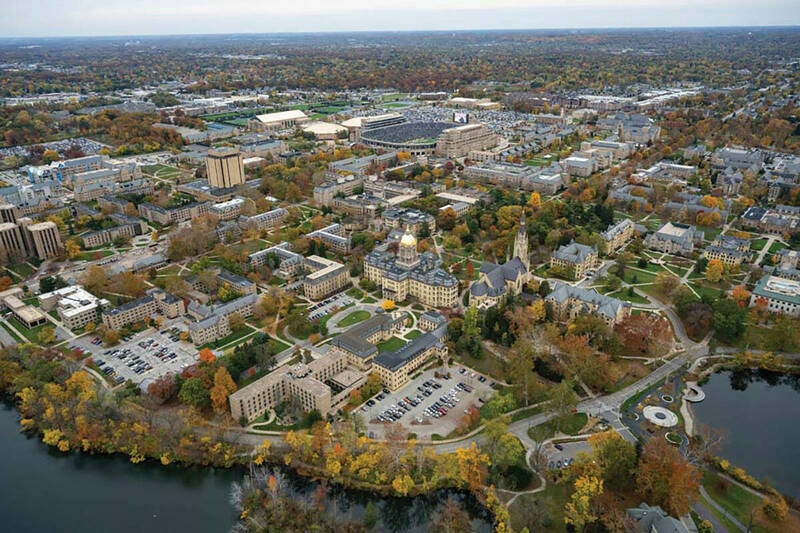 Barbara Johnston
Barbara Johnston
Every 10 years, the University engages in a strategic planning process aimed at charting its future course. “Notre Dame 2033: A Strategic Framework” is the latest such effort, the product of more than two years of research and reflection from individuals and groups across campus.
Emerging from this self-assessment is a major, unifying goal: To be the leading global Catholic research university, on par with but distinct from the world’s best private universities.
Toward that end, what is the vision of Provost John T. McGreevy ’86 — the architect of that final report — for what Notre Dame will look like and be like in a decade?
“We’ll be more anchored in our Catholic mission,” McGreevy says. “We need to become a more global community. Half of the world’s Catholics are people of color living in the global South. If Notre Dame’s going to remain Catholic, we really should pay attention to that.”
The University will be more diverse and inclusive, he says. “The places that thrive in the 21st century are places that really can be both welcoming to a variety of people but also include them in the most profound way.”
The more inclusive Notre Dame becomes, the more Catholic it will be, the provost says. To be Catholic is to be in dialogue with people from other faith traditions, he says.
That goal includes economic diversity. “It’s right that people in this country are looking at universities like Notre Dame and asking questions about what percentage of families come from low-income families and what percentage are first-generation college students,” he says. “We have to make sure those students come here, feel supported and that they own Notre Dame as much as a kid whose great-great-grandparents went to Notre Dame.”
Very few schools have as clear a mission as Notre Dame does, McGreevy says: “distinctly, authentically Catholic but also competing with the very best private research universities in the world.”
Here’s a snapshot of the University 10 years hence, based on a reading of the strategic framework:
In 2033, Notre Dame’s identity stands firmly on four familiar pillars: Catholic character, undergraduate education and formation, graduate education, and research and scholarship.
More international students are enrolled, contributing to Notre Dame’s rise in international rankings.
A greater percentage of the student body comes from low- and moderate-income families. Notre Dame works closely with Catholic schools to create a pipeline of students prepared to succeed here.
The University is a world leader in sponsoring research on the global Catholic Church.
There is a deepened commitment to engagement with people from diverse religious backgrounds.
In 2033, a health research initiative centered on bioengineering and life sciences spans several departments, focusing on rare diseases and health inequities.
Although some U.S. universities have backed down from a commitment to diversity and inclusion, Notre Dame pursues those goals as an integral part of its Catholic mission.
The University’s partnership and engagement with the South Bend area is larger and stronger.
Notre Dame is operating a new state-of-the-art mental health clinic in South Bend, focusing primarily on suicide prevention, trauma and substance use.
More professors hold joint appointments in two or more departments, schools, centers or institutes.
The University is much more selective in promotion of faculty.
More staff and enhanced services are devoted to student mental health support, education, prevention and early intervention.
The University is successfully competing for the strongest graduate students and providing the means for them to flourish, including increased stipends for doctoral students.
In 2033, more postdoctoral fellows are on campus, drawn in part by endowed fellowships.
External research funding is steadily increasing, far surpassing the $244 million that was a record in fiscal year 2022.
Notre Dame is a model for collegiate athletics, with a plan centered on education and the well-being of student athletes.
An influential Notre Dame Democracy Initiative is drawing on scholarly expertise across the faculty.
New construction has slowed, but many older facilities have received major renovations — and in some cases been demolished — to provide better space for research.
Read the full report at strategicframework.nd.edu.
Margaret Fosmoe is an associate editor of this magazine.